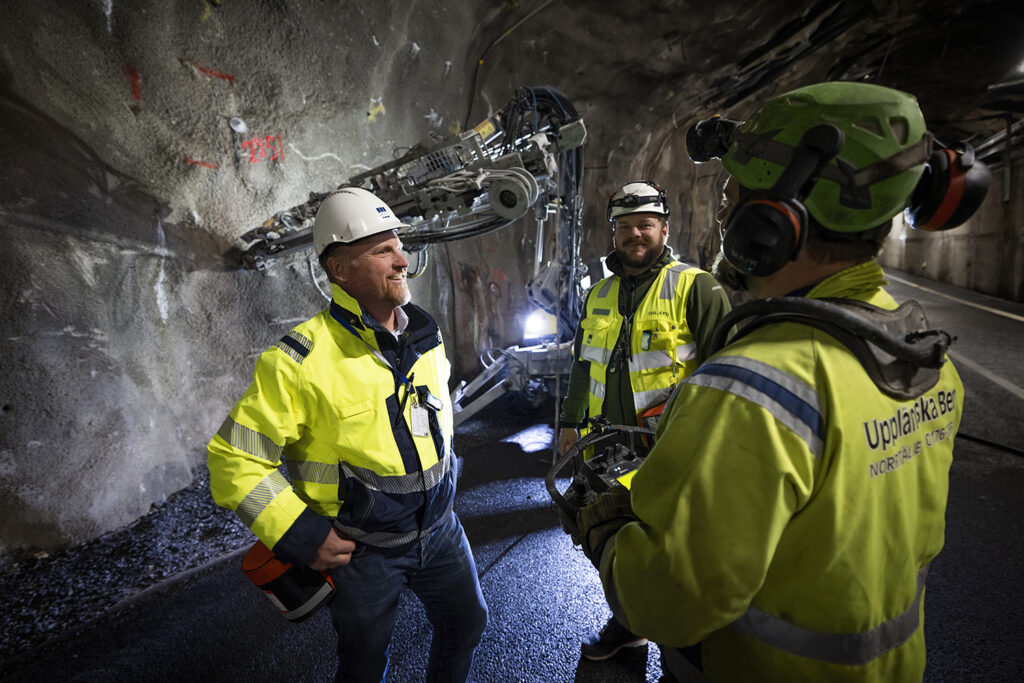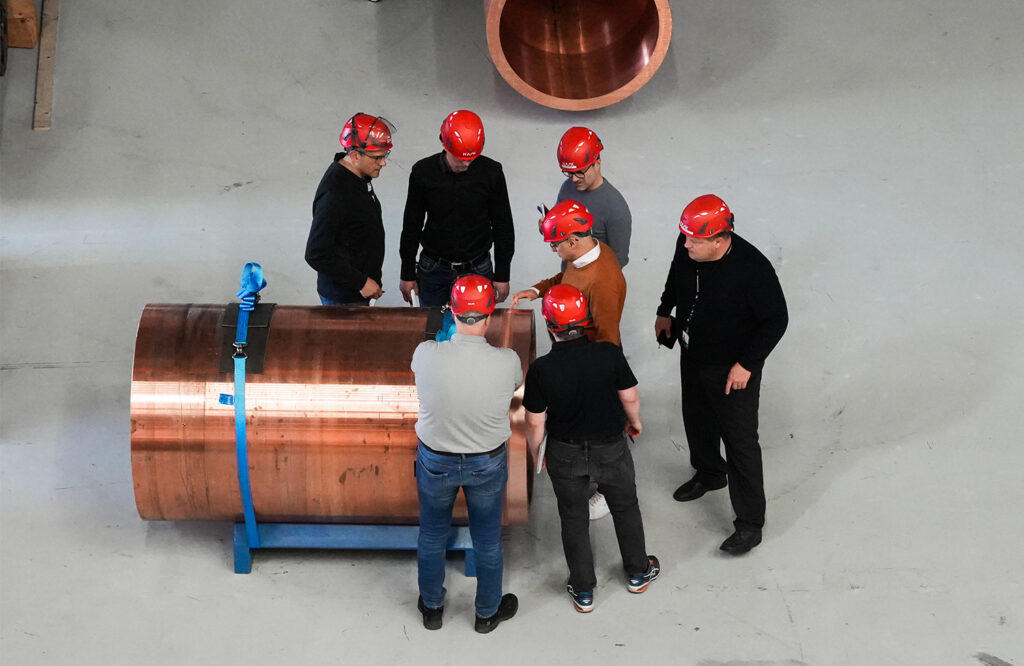Technical visits
Since SKB is both an implementer of a comprehensive programme for nuclear waste management and an owner and operator of nuclear facilities, we can provide access to our facilities as necessary to our clients and their stakeholders. Transparency plays a very important part in increasing public knowledge about what a waste management organisation does, and in creating understanding and trust in our activities.
Being able to show facilities in operation is a very powerful tool in our communication work and it is quite a unique feature that we can offer to our clients and business partners. We can show that there are existing ways to safely manage and dispose of nuclear waste and spent nuclear fuel. We are very proud of the way we manage and operate our facilities, our guides are highly knowledgeable and professional and they are used to interacting with any kind of stakeholder.
Our facilities are briefly described below.
Clab
Clab (Central Interim Storage for Spent Nuclear Fuel), licensed and taken into operation in 1985. Clab is where all spent nuclear fuel from the Swedish nuclear power plants is stored. The facility is located on the Simpevarp Peninsula near the Oskarshamn nuclear power plant and is owned and operated by SKB. The spent fuel is stored in water filled basins placed in vaults 30 metres deep in the bedrock. The storage pools are made of concrete with stainless sheet steel linings and are designed to withstand earthquakes.
SFR
SFR (Final Repository for Short-lived Radioactive Waste) was licensed and started operation in 1988. It receives operational waste from the nuclear power plants and Clab, as well as radioactive waste from medical care, research and industry. SFR is located near the Forsmark nuclear power plant in Östhammar municipality, approximately 100 km north of Stockholm. The repository is situated beneath the Baltic Sea, covered by about 60 metres of rock. Two one-kilometre-long access tunnels lead from the harbour in Forsmark to the repository area. The facility consists of four 160-metre-long rock vaults, plus a 70-metre-high rock cavern in which a concrete silo has been built. The facility’s total storage capacity is 63,000 cubic metres of waste.
SKB plans to extend the SFR to accommodate decommissioning and additional operational waste from the Swedish nuclear power plants. The licence application for the extension was granted in 2021.
Äspö Hard Rock Laboratory
SKB’s research village on the island of Äspö comprises a number of facilities, the best-known being the underground Hard Rock Laboratory, operational since 1995. The whole area around Äspö was actually SKB’s first “dress rehearsal” and preparation for a site characterisation programme that we knew we would be carrying out once suitable candidate sites for a deep repository were identified in the country. During the early 1990s a detailed site characterisation programme was carried out for the Äspö site and specific equipment for quality assured measurements and sampling was developed in collaboration with the network of contractors, universities and other experts. For the construction of the tunnel we engaged various contractors to carry out the excavation using different methods, such as drill and blast, and tunnel boring machines. The facility is used for research, development and full-scale demonstration of the actual equipment and materials to be used in SKB’s repositories. SKB has carried out long-term and short-term tests on a wide range of subjects related to geological disposal, from microbes and groundwater chemistry to engineering, repository production and disposal processes. The Äspö research village also includes an accredited water chemistry laboratory for sampling and analysis, as well as a multi-test hall where we investigate buffer materials, buffer emplacement logistics, equipment, etc.
Canister Laboratory
The Canister Laboratory was inaugurated in 1998. This is where we conduct research on the copper canister where the spent nuclear fuel will be emplaced before disposal in the bedrock of the spent fuel repository. We explore materials science, detail the manufacturing process and how it will be industrialised into serial production, develop the process of sealing the base and lid onto the copper tube to form the canister, and how quality assurance of the final product can be performed before shipping it to the disposal site.
Transportation System
The Transportation System was taken into operation in 1982. Most of Sweden’s radioactive waste and spent nuclear fuel is shipped by sea from the nuclear power plants to SFR or Clab. SKB operates an overarching system that demonstrates the compatibility of waste packages and ensures the logistics and quality assurance over the whole waste chain, from production to final disposal. The transportation system comprises transport casks, terminal vehicles and a purpose-built ship, the M/S Sigrid. The terminal vehicles are used to transport the waste the short distances between the facilities and the ship.
The planning and activities of transportation are carried out in collaboration between SKB and the waste producers. The spent nuclear fuel is shipped from the nuclear power plants to Clab in casks with roughly 30-centimetre thick steel walls and cooling fins to remove the decay heat generated by the fuel. M/S Sigrid can accommodate 12 spent fuel transport casks at the same time for transport between the nuclear power plant and the interim storage facility Clab.
A demonstration of the transportation system shows that there are safe and efficient ways to handle and transport both spent nuclear fuel and a wide range of radioactive waste packages without any increased risk to workers, the general public or nearby residents.

